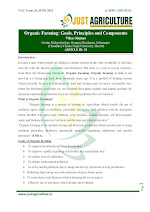- Two spindle using divisions which reduce chromosome number from diploid to haploid constitute meiosis.
- Main function of meiosis is to produce gametes in an organism.
- 4 daughter cells (from a mother cell) identical to mother cell in shape and size but different in chromosome composition.
- Neurosis occurs in reproductive organs like anther and ovary.
Interphase:-
- Interphase consists G1, S and G2 phases.
- Interphase occurs only in once in the entire process of meiosis. (Not after meiosis 1)
- During S phase 99.7% DNA is synthesized present in nucleus rest of the 0.3% DNA synthesized in zygotene in stage.
- G2 phase is very short duration. (replication of mitochondria and chloroplast)
(A). First Meiotic Division:-
It results in reduction of chromosome number in each new cell to just half of the mother cell, so it is referred to as reductional division.
(1). Prophase 1:-
It consists of 5 sub stages:-
(a). Leptotene:-
- Chromosomes look like in thin threads under light microscope.
- Chromosomes are scattered throughout the nucleus in random manner.
- RNA and Protein synthesis also takes place in this stage.
(b). Zygotene:-
- Homologous chromosomes begin to pair.
- Chromosomes becomes shorter and thicker.
- Synthesis of remaining DNA 0.3% takes place in this stage.
- Synaptonemal complex also develops during this stage.
(c). Pachytene:-
- Chromosomes look like bivalent. Each bivalent has two chromatids. Thus, each pair has four chromatids, which is known as Tetrad.
- Chromosome look like haploid number of chromosomes in the cell.
- Nucleolus is present and attached to a chromosome.
- Formation of chiasma and crossing over takes place.
- Crossing over takes place between non-sister chromatids.
(d). Diplotene:-
- Separation of homologous chromosomes begin.
- It starts at centromere and moves towards the end.
- Separating chromosome are attached at some points, these points are called chiasmata.
- Chromosome condensed and become shorter and thicker.
- Nucleolus decreases in size.
(e). Diakinensis:-
- This stage begins after terminalisation of chiasmata.
- Chromosomes are condensed.
- Bivalents are distributed throughout the cell.
- Nucleolus and nuclear membrane disappear and of diakinensis.
(2). Metaphase 1:-
- Spindle apparatus gradually organises.
- Bivalents arranged on equatorial plate.
- Centromere of each chromosome divides longitudinally.
(3). Anaphase 1:-
- From each chromosome, one chromosome move towards one pole and another one opposite pole.
- Sister chromatids of each chromosome remain attached at the centromere.
- Homologous chromosomes reach to the opposite pole at the end of this stage.
(4). Telophase 1:-
- Chromosomes uncoiled, relax and regrouping of chromosome occurs.
- Nucleolus and nuclear membrane reappears.
- Two haploid daughter nuclei are formed.
Cytokinensis:-
Division of cytoplasm takes place by cell plate method in plants and by furrow method in animals.
(B). Meiosis 2:-
- Meiosis 1 results in reduction of chromosome number (haploid).
- Interface is very short.
- It does not have a synthesis phase because each chromosome already contain two chromatids.
- Chromatids have alternate segments of non-sister chromatids due to recombination.
(a). Prophase 2:-
- This stage is quite similar to mitosis, however there are several differences between them.
- There is no relational coiling sister chromatids.
- Chromosomes are much condensed and shorter and thicker than mitosis.
- At the end of prophase 2, nucleolus and nuclear membrane disappear and spindle apparatus organised.
(b). Metaphase 2:-
- Chromosomesme arranged on equatorial plate.
- Two sister chromatids of each chromosome are distinctly separated from each other.
- Chromosome become more thicker and shorter.
(c). Anaphase 2:-
- Centromere of chromosome of observably divides longitudinally.
- Two sister chromatids of each chromosome begin to separate.
- This stage occurs when sister chromatids reach opposite poles.
(d). Telophase 2:-
- Chromatids and uncoiled, so that they assume the appearance of a loose ball of thread.
- Nuclear envelope is reorganized from the elements of endoplasmic reticulum and nucleolus reappears.
Cytokinensis:-
- Cytoplasm of each of two cells of a dyad divides into two daughter cells.
- One mother cell produce for haploid cells.
Thank You
Vikas Kashyap:)










0 Comments